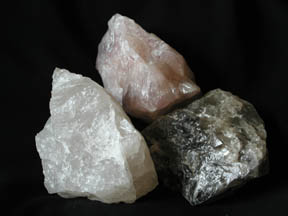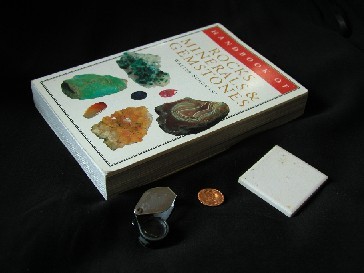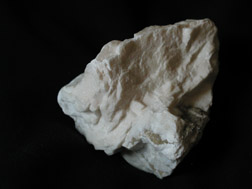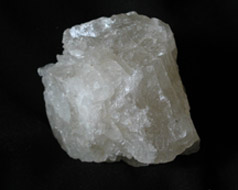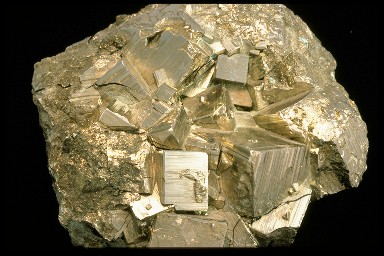Click on image for full size
Windows to the Universe
Related links:
Whatís That Mineral?
Each type of mineral is made of a unique group of elements that are arranged in a unique pattern. However, to identify minerals you donít need to look at the elements with sophisticated chemical tests. Since, a mineralís unique chemical makeup determines its outward characteristics, we can identify minerals by examining their physical properties. Grab an unknown mineral and look for the properties listed below. Once you know the traits of your minerals, you can find its name by looking for minerals with those traits in a mineral identification book.
Shape
A mineral has a crystal form because of the arrangement of atoms within it. Not all crystals look the same. In fact, there are six different groups of crystal shapes. But some minerals do not look like crystals. This is typically either because the mineral sample is actually many tiny crystals that together form a large mass or because the crystal has been broken. In the former case, crystal growth is interrupted by competition for space.
Luster
Luster describes the way light is reflected by the surface of a mineral. The shiny surface of metals is described as metallic luster. Minerals that have a non-metallic luster can be described as having a glassy, pearly, or dull (earthy) luster.
Color
Most people notice the often-beautiful colors of minerals when they first look at them. Minerals can be very beautiful colors. However, if you are trying to identify a mineral, remember that the same type of mineral may be found in a variety of colors. For instance, the minerals quartz can be found in many colors including pink, purple, white or black.
Streak
Streak is the color of a mineral when it is powdered and it is often different from the color of the whole mineral. Minerals that come in different colors usually have the same color streak. To powder a little bit of a mineral, you can rub it against a small white piece of porcelain called a streak plate. You canít measure streak with every mineral because you will only get a streak if the hardness of the mineral is less than the hardness of the plate.
Hardness
Hardness is the resistance of a mineral to abrasion. The harder a mineral is, the less likely it is to become scratched. Mohs hardness scale is a relative scale that is used to describe the hardness of minerals.
Cleavage
Minerals that have cleavage will break in a certain direction where the bonds between atoms are not strong. If you find a mineral that breaks preferentially in one direction leaving clean flat breaks, it likely has a plane of cleavage. Some minerals have several planes of cleavage in different directions.
Fracture
Minerals that do not have cleavage will fracture when broken. If the fracture has a smooth curved surface it is called a conchoidal fracture, otherwise most minerals fracture irregularly leaving a wavy uneven break.


